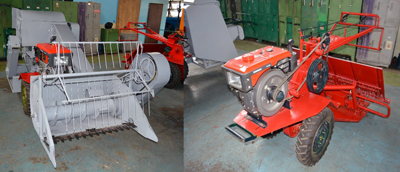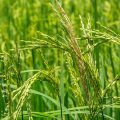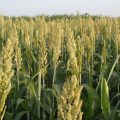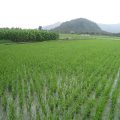Rice farms in the country have low productivity not only as result of poor crop management but also because of low mechanization level. Some major activities have to be mechanized in order to improve productivity as well as reduce costs. Mechanization is needed in crop establishment, harvesting, threshing, drying, and milling. It can also increase brown rice production. The direct effects of mechanization on crop yield include timeliness, precision in the conduct of operations, especially in hill seeding in rows and mechanical transplanting, and reduction of field losses for activities associated with harvesting, drying, and up to milling. It is estimated that yield productivity through precision seeding or machine transplanting can be enhanced by roughly 5%, while loss prevention during harvesting and threshing can contribute another 5%. These will amount to about 10% increase or recovery in crop yield.

To address the economic losses from rice production and postproduction operations in the country, the Philippine Council for Agriculture, Aquatic and Natural Resources Research and Development of the Department of Science and Technology (DOST-PCAARRD) developed the Strategic S&T Program for Rice, wherein one of the components is the Rice Mechanization Program. The Rice Mechanization Program is a P65-million project that is expected to contribute to the reduction of rice harvesting and threshing losses from 4.2% to 1.8% in 2020. It will also help lower the losses from drying paddy rice, from 5.8% to 3.8% in 2016. The machines once developed and pilot-tested are also expected to lower production costs and improve rice quality.
Part of the Rice Mechanization program is the development of harvester and transplanter as well as a compact rice mill. These technologies were developed by the DOST-Metals Industry Research and Development Center (DOST-MIRDC) and the Department of Agriculture-Philippine Center for Postharvest Development and Mechanization (DA-PhilMech).
DOST-MIRDC and DA-PhilMech developed and tested rice transplanting and harvesting attachments that can be mounted and dismounted from the hand tractor. The availability of these implements will help increase the utilization of hand tractor by farmers. Moreover, these attachments are affordable and can potentially reduce the cost of farm level mechanization.
With the harvester and transplanter attachments, farmers can minimize delays from harvesting and transplanting as well as minimize cost of labor. Rice farmers, agricultural cooperatives, and local fabricator shops can benefit from this technology.

Harvester attachment (left) and transplanter attachment (right) (Photo from DOST-MIRDC)
Meanwhile, the impeller-type ricemill can increase milling efficiency and milling recovery or lessen chances of grain breakage. The most common ricemills in the country, stone disk or “kiskisan,” has a milling efficiency of 50-55%, wherein 50-55kg milled rice can be produced from 100kg dried paddy. On the other hand, rubber-roll type rice mills, which have an average milling recovery of 60-63%, can produce 60-63kg from 100kg dried paddy.
The impeller-type ricemill can address the need for an improved milling system in the country. This machine has simple hulling mechanism and good performance for long grains. Also, it speeds up the milling process from a milling capacity of 230 kg per hour. Head rice recovery is high at 64% for milled rice and 91% for brown rice.
A commercial model of the impeller-type ricemill has been developed by DA-PhilMech. Among its advantages include its ease in installation, small working space requirement, lower maintenance and operating cost, and higher milling capacity.
DOST-PCAARRD will showcase the impeller-type ricemill and harvester and transplanter attachments including other science and technology (S&T) agri-aqua research and development (R&D) outputs on March 2-4, 2016 during the SIPAG FIESTA at its headquarters in Los Baños, Laguna.
SIPAG, a technology transfer strategy, embodies the Council’s commitment to DOST’s Outcome One in a bid to ensure that the fruits of R&D activities for the agri-aqua sectors will be a blessing for every Juan.
by Agricultural Resources Management Research Division, DOST-PCAARRD S&T Media Service






